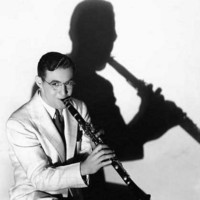The last song I ever sang at karaoke:
I shit you not.
The last song I ever sang at karaoke:
I shit you not.
It’s probably about equal, but with woodwinds it just feels like a lot more.
Depends on the woodwind. If it’s an oboe, it takes less volume of wind than damned near anything else, but it takes it at a higher pressure.
That must be why I couldn’t do woodwinds. I couldn’t get enough pressure out.
I must look for this next time (if ever) I am in KTV. My school recently had some sort of team-building exercise there. I had a cold and was not in good voice but eventually I started singing anyway just to briefly pause the parade of extremely bland Chinese ballads. My best performance was probably “People are Strange,” a re-orchestrated version which seems to have been slightly polkafied, but everyone seemed to be most impressed by my version of Tom Petty’s “Don’t Do Me Like That.” This was the original arrangement and may as well have been Slayer as far as my audience was concerned.
Saxs are easy and fun too. Theoretically I should be able to sing while playing my uke but I drift off after a few words. Or I sing and stop strumming. I think playing the sax first may have ruined me. When I play sax either I am singing or playing

Isn’t that what makes it such a great way to sell alcohol?
While it’s entirely possible that you are as bad a singer as you say you are that hearing yourself takes the fun out of singing, as someone who can sing, I think that the joy of singing is not in hearing yourself or in recognition of your abilities by others. It’s actually the physical sensation that flows through you as you are belting out a song, it’s about getting lost, not in the performance, but in the performing.
That’s about the only skill you need to develop to have fun singing.
Ehhhhh… As someone who used to always be horribly out of tune and now wavers between reasonably good and out of tune, that sensation was always there – but it’s better when I’m in tune.
Well, I’m out of ideas then. 
Yup. Clarinets are cool. Oboes are even cooler. Bassoons are coolest (especially when opening The Rite of Spring).
Of course, nothing is as cool as Jeff Beck’s Strat… because Jeff Beck!
The ill wind that no one blows good.
Two things I did:
Never had any problem - easier than a clarinet. 
And definitely the best tone!
Isn’t that the French horn?
I’ve heard it’s the closer in tone to a pure sine wave than any other instrument.
Bowed strings are somewhere in the triangle / sawtooth family.
Nothing is a square wave, because that takes an insane amount of harmonics to approximate.
I’ve heard it’s the closer in tone to a pure sine wave than any other instrument.
Recorder, specifically Renaissance-style recorder. The oboe has a very rich spectrum.
Bowed strings are somewhere in the triangle / sawtooth family.
Yup.
Nothing is a square wave, because that takes an insane amount of harmonics to approximate.
Analogue instruments generate an infinite number of harmonics. It’s just that, as the harmonic number tends towards the infinitely large, the amplitudes of the harmonics tend toward the infinitesimally small (and, of course, most will lie outside our range of hearing).
The number of harmonics only becomes an issue in additive synthesis, where only a finite number of oscillators is available. (The pipe organ would be an analogue example of an additive synth - you add pipes sounding at the principal harmonics to generate a tone colour.) Square wave generators are generally made from electronic switches, though.
The real issue is that it is physically impossible to switch between negative amplitude and positive amplitude instantaneously, whether the switching network is electronic or a cylindrical tube of air with a closed end. The ideal square wave presupposes that the wave’s amplitude occupies one level, and then, of a sudden, the other, with no other intervening values.
The main characteristic of a square wave is that the harmonics are all odd-numbered (fundamental, twelfth, seventeenth, etc.), which gives it a hollow sound. This is a characteristic shared with cylindrical tubes with one closed end (*cough* clarinet), which is why the clarinet overblows at the twelfth, rather that at the octave like other woodwinds.